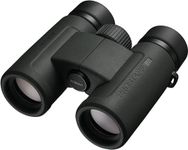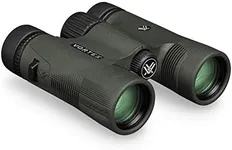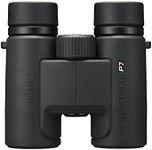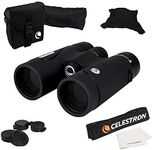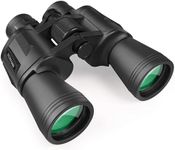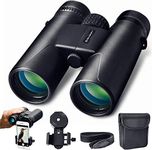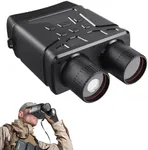Buying Guide for the Best Compact Birding Binoculars
Choosing the right compact birding binoculars can greatly enhance your bird-watching experience. The key is to find a pair that balances magnification, clarity, and ease of use. Compact binoculars are designed to be lightweight and portable, making them ideal for birders who are always on the go. Here are some key specifications to consider when selecting the best compact birding binoculars for your needs.MagnificationMagnification refers to how much closer the binoculars can make an object appear. For birding, a magnification of 8x or 10x is generally recommended. 8x magnification provides a wider field of view, which is useful for tracking moving birds, while 10x magnification offers more detail but can be harder to keep steady. Choose 8x if you prioritize stability and ease of use, and 10x if you want to see finer details and are comfortable with a narrower field of view.
Objective Lens DiameterThe objective lens diameter, measured in millimeters, determines how much light the binoculars can gather. For compact binoculars, a diameter of 25mm to 32mm is common. Larger diameters (closer to 32mm) allow more light, providing brighter images, especially in low-light conditions like dawn or dusk. However, they can also make the binoculars bulkier. If you often bird-watch in low light, opt for a larger diameter. For general daytime use, a smaller diameter will suffice and keep the binoculars more compact.
Field of ViewField of view (FOV) is the width of the area you can see through the binoculars, usually measured in feet at 1,000 yards. A wider FOV makes it easier to locate and follow birds in flight. Compact binoculars typically have a FOV ranging from 300 to 400 feet. If you are a beginner or often watch fast-moving birds, a wider FOV is beneficial. More experienced birders might prefer a narrower FOV if they prioritize detail over breadth.
Weight and SizeWeight and size are crucial for comfort and portability. Compact binoculars are designed to be lightweight and easy to carry, usually weighing between 10 to 20 ounces. Lighter binoculars are easier to hold steady for long periods and more comfortable to carry on long hikes. Consider how you plan to use them: if you will be carrying them for extended periods, prioritize lighter models. If you will be stationary or using a tripod, weight may be less of a concern.
Optical QualityOptical quality affects the clarity and sharpness of the image. Look for binoculars with high-quality glass and coatings, such as fully multi-coated lenses, which enhance light transmission and reduce glare. Higher optical quality provides clearer, brighter images and reduces eye strain during extended use. If you are serious about birding and want the best possible image quality, invest in binoculars with superior optics. For casual use, mid-range optical quality should be sufficient.
Durability and WaterproofingDurability and waterproofing are important for outdoor use. Binoculars with rubber armor provide better grip and shock resistance. Waterproof and fog-proof models ensure that your binoculars can withstand various weather conditions and temperature changes. If you often bird-watch in challenging environments or unpredictable weather, prioritize these features to protect your investment. For occasional or fair-weather use, these features might be less critical.
Eye ReliefEye relief is the distance from the eyepiece to your eye while still seeing the full field of view, important for eyeglass wearers. Longer eye relief (15mm or more) is more comfortable and allows you to use binoculars without removing your glasses. If you wear glasses, look for binoculars with adjustable or long eye relief. If you do not wear glasses, this feature is less critical, but still consider it for overall comfort during extended use.
